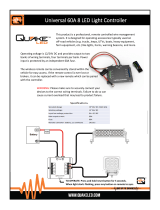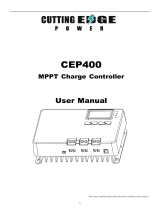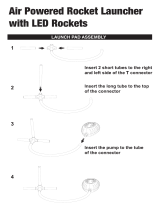PowerTech MP3749 is a high-quality MPPT solar charge controller designed for lithium or SLA batteries. It features advanced MPPT tracking technology for fast and efficient solar charging, a three-stage charging algorithm for battery health and performance, and comprehensive electronic protections for safe and reliable operation. With its wide range of capabilities, the MP3749 is ideal for various applications, including RVs, solar home systems, and remote monitoring systems.
PowerTech MP3749 is a high-quality MPPT solar charge controller designed for lithium or SLA batteries. It features advanced MPPT tracking technology for fast and efficient solar charging, a three-stage charging algorithm for battery health and performance, and comprehensive electronic protections for safe and reliable operation. With its wide range of capabilities, the MP3749 is ideal for various applications, including RVs, solar home systems, and remote monitoring systems.




















-
 1
1
-
 2
2
-
 3
3
-
 4
4
-
 5
5
-
 6
6
-
 7
7
-
 8
8
-
 9
9
-
 10
10
-
 11
11
-
 12
12
-
 13
13
-
 14
14
-
 15
15
-
 16
16
-
 17
17
-
 18
18
-
 19
19
-
 20
20
-
 21
21
-
 22
22
-
 23
23
-
 24
24
-
 25
25
-
 26
26
-
 27
27
-
 28
28
-
 29
29
-
 30
30
-
 31
31
-
 32
32
-
 33
33
-
 34
34
-
 35
35
-
 36
36
PowerTech MP3749 is a high-quality MPPT solar charge controller designed for lithium or SLA batteries. It features advanced MPPT tracking technology for fast and efficient solar charging, a three-stage charging algorithm for battery health and performance, and comprehensive electronic protections for safe and reliable operation. With its wide range of capabilities, the MP3749 is ideal for various applications, including RVs, solar home systems, and remote monitoring systems.
Ask a question and I''ll find the answer in the document
Finding information in a document is now easier with AI
Related papers
-
PowerTech MP3768 Owner's manual
-
PowerTech MP3743 Owner's manual
-
PowerTech MB3912 Owner's manual
-
PowerTech ZM9157 Owner's manual
-
PowerTech ZM9158 User manual
-
PowerTech ZM9159 Owner's manual
-
PowerTech MP3766 Owner's manual
-
PowerTech MP3766 User manual
-
PowerTech ZM9126 Owner's manual
-
PowerTech MP3739 Owner's manual
Other documents
-
Epever Tracer AN Series MPPT Charge Controller User manual
-
 Quake LED QUIC798 Installation guide
Quake LED QUIC798 Installation guide
-
 ROVIN Collapsible Mosquito Zapper Camping Lantern User manual
ROVIN Collapsible Mosquito Zapper Camping Lantern User manual
-
WZRELB RBP300012VCRT Installation guide
-
 CUTTING EDGE POWER CEP400 User manual
CUTTING EDGE POWER CEP400 User manual
-
DigiTech XC5800 Owner's manual
-
 WILTRONICS GT3047 User manual
WILTRONICS GT3047 User manual
-
 CUTTING EDGE POWER CEP300 User manual
CUTTING EDGE POWER CEP300 User manual
-
RCFUNKID Double Sided RC Stunt Car User manual
-
CONCORD QC5528CSOLBAT-A Owner's manual








































